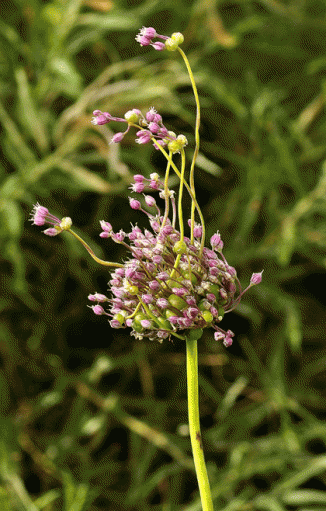This strange, tall and statuesque plant is not found too frequently around the country, being mainly on display on the Aran Islands, in the Burren and along the west coast of Ireland. A stout stem, which reaches 175 cm, bears an irregular umbel of mauve flowers (8-15 mm each), interspersed with short-stalked bulbils. Before the plant blooms (from June to August) this round cluster of flowers and bulbils is covered with a papery sheath which has a long pointed tip. The glaucous, grass-like leaves are keeled and tend to wither around the time the flowers bloom. This is considered to be a rare perennial plant, now thought to be a native belonging to the Daffodil or Amaryllidaceae family.
I first recorded and photographed Babington’s Leek near the beautiful Loop Head in Co Clare in August 2013.
If you are satisfied you have correctly identified this plant, please submit your sighting to the National Biodiversity Data Centre




